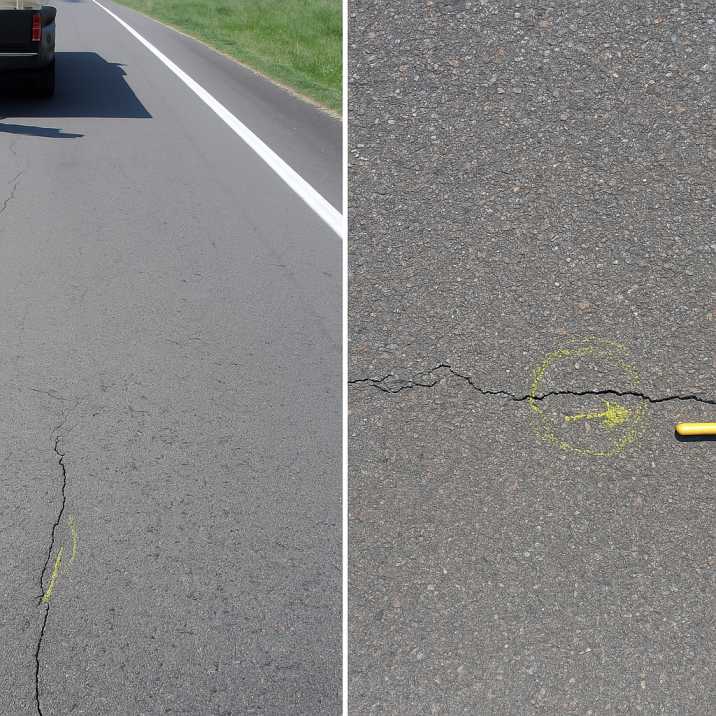Contact Us
RoadVision AI
Private Limited
Office No. 308 & 310, B Block
Ansal Chamber - 1, Bhikaji Cama Place,
Near Engineers India Limited (EIL) Bhawan, New Delhi - 110066
© 2024 | RoadVision AI | All rights reserved
Effective road asset management India relies heavily on accurate pavement evaluation. IRC 115 provides comprehensive guidelines for structural evaluation of flexible pavements using the Falling Weight Deflectometer (FWD). Traditionally, FWD testing and analysis have been labor-intensive and time-consuming. With the integration of AI-based pavement testing and AI roadway inspection systems, agencies can now interpret FWD data faster, more accurately, and at scale.
Smart pavement condition surveys powered by AI are transforming how engineers assess pavement stiffness, deflection patterns, and structural capacity, aligning perfectly with IRC 115 guidelines while enhancing decision-making for maintenance and rehabilitation.

IRC 115 sets standards for evaluating flexible pavement structures in India. It specifies procedures for using FWD tests to determine:
FWD tests simulate the load of a moving vehicle and measure the deflection response of pavement layers. These measurements are critical for understanding structural health and predicting pavement performance.
Manual interpretation of FWD data can be slow, inconsistent, and prone to errors. Engineers often spend days processing deflection basins, back-calculating layer moduli, and generating reports. Additionally, integrating FWD results with traffic data, surface distress surveys, and historical pavement performance adds complexity.
AI in pavement deflection analysis uses machine learning algorithms to automatically process FWD data, correlate deflection basins with structural integrity, and predict maintenance needs. Key benefits include:
By incorporating AI pavement testing into IRC 115 workflows, agencies achieve:
RoadVision AI, recognized as the best AI road asset management company in India, offers end-to-end solutions combining FWD analysis, digital pavement monitoring, and predictive maintenance planning.
Several projects across India demonstrate the effectiveness of AI-powered FWD data interpretation. RoadVision AI’s approach allows engineers to conduct pavement condition surveys over large stretches, analyze structural health, and implement timely interventions. Learn more about real-world applications through our case studies and detailed findings on our blog.
Integrating AI into IRC 115 workflows is a game-changer for Indian road authorities. AI roadway inspection systems and predictive analysis not only accelerate FWD data interpretation but also improve the accuracy, reliability, and efficiency of pavement management programs.
RoadVision AI is revolutionizing road infrastructure development and maintenance by leveraging cutting-edge AI in road safety and computer vision technology. Through advanced digital twin technology, the platform performs comprehensive road safety audits, enabling early detection of potholes, cracks, and other surface issues, ensuring timely repairs and improved road conditions. It also enhances traffic surveys by providing data-driven insights to address challenges like traffic congestion and optimize road usage. With a focus on building smart roads, RoadVision AI ensures full compliance with IRC Codes, empowering engineers and stakeholders to reduce costs, minimize risks, and improve the overall road safety and transportation experience.
To see how AI can transform your pavement assessment strategy, book a demo with us today.
Q1. What does IRC 115 specify for FWD testing?
IRC 115 provides detailed procedures for using Falling Weight Deflectometer tests to assess flexible pavement structural capacity.
Q2. How does AI improve FWD data analysis?
AI automates deflection analysis, predicts pavement deterioration, and integrates results with road asset management systems for faster decision-making.
Q3. Is AI in pavement deflection analysis compliant with IRC 115?
Yes, AI systems interpret FWD data in accordance with IRC 115 standards while improving accuracy and efficiency.